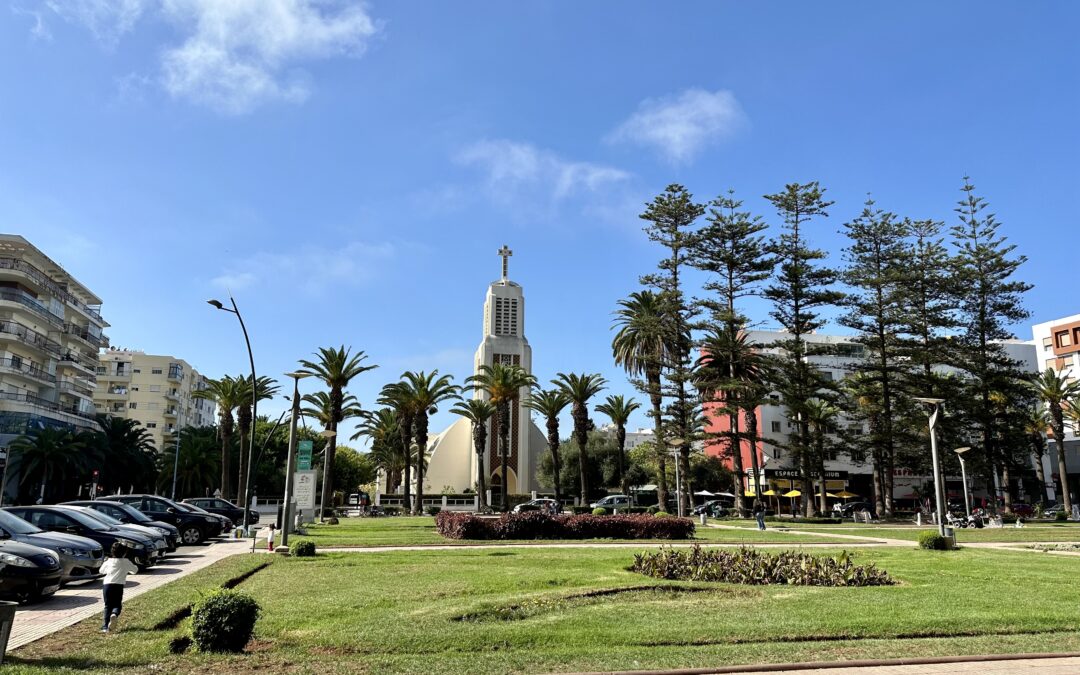Pluralism represents the fabric of a society woven with varied threads – different beliefs, cultures, and perspectives. In this article, we delve into the top 20 examples of pluralism, shedding light on how this concept plays out in real-world scenarios. From the coexistence of multiple political ideologies to the integration of diverse cultural traditions, each example encapsulates the essence of pluralism. These instances not only illustrate the theory but also demonstrate its practical relevance in fostering a more inclusive and harmonious society.
Understanding pluralism is crucial in our increasingly interconnected world. It paves the way for mutual respect and peaceful cohabitation among diverse groups. As we walk through these examples, we’ll uncover the broader definition of pluralism and its significance in various sectors including education, religion, and governance. This exploration is designed to offer insights and provoke thought, making it an informative read for students, professionals, and anyone interested in the dynamics of diverse societies.
What is Pluralism?
Pluralism is a concept that embraces diversity and multiple perspectives within a society, organization, or system. It suggests that various groups, each with different beliefs, interests, and cultural backgrounds, can coexist harmoniously and share equal access to power and decision-making. This concept is fundamental in political theory, philosophy, and social sciences, emphasizing tolerance, dialogue, and understanding among diverse communities. In a pluralistic society, no single group or ideology dominates, which allows for a rich tapestry of ideas and viewpoints to thrive.
Additionally, pluralism extends to the recognition and affirmation of diversity in various aspects such as race, religion, language, and gender. It challenges the notion of a monolithic culture or a single, overarching viewpoint. Instead, it advocates for a society where differences are not just tolerated but are valued and engaged with constructively.
In the political realm, pluralism entails a system of governance that accommodates a wide range of groups and interests. This ensures that power is not concentrated in the hands of a few and encourages a healthy democratic process. In such a system, multiple voices, including those of minority groups, have a say in shaping policies and laws.
From a philosophical and ethical standpoint, pluralism often refers to the belief that there is not one singular truth or perspective on moral, aesthetic, or philosophical matters. Instead, it acknowledges a variety of possible truths and perspectives that coexist.
Therefore, pluralism is a key principle for fostering inclusive, open, and democratic societies. It supports the idea that diversity in thoughts, beliefs, and backgrounds is not only a societal reality but also a strength. This contributes to the richness and vibrancy of a community. By promoting dialogue, mutual respect, and understanding, pluralism is essential for peaceful coexistence and collective progress.
Examples of Pluralism
1. Cultural Pluralism in New York City – New York City is a prime example of cultural pluralism, where people from various ethnicities, religions, and cultures live together. Areas like Chinatown, Little Italy, and Harlem showcase diverse cultural heritages, each maintaining its unique traditions while contributing to the city’s dynamic mosaic.
2. Religious Pluralism in India – India’s diverse religious landscape, with Hinduism, Islam, Christianity, Sikhism, Buddhism, and Jainism coexisting, is a classic example of religious pluralism. This coexistence is marked by shared festivals and interfaith initiatives, illustrating respect and understanding between different faith communities.
3. Political Pluralism in the European Union – The European Union, with its multiple member states having different political systems and ideologies, exemplifies political pluralism. This diversity is managed through a complex system of governance, ensuring that no single country or ideology dominates the union’s policies.
4. Linguistic Pluralism in Switzerland – Switzerland’s four official languages (German, French, Italian, and Romansh) represent linguistic pluralism. The country’s education and government systems cater to these linguistic groups, ensuring equal representation and fostering a culture of multilingualism.
5. Ideological Pluralism in Academia – Universities are often spaces where ideological pluralism is evident. Students and faculty with varying ideological beliefs, from liberal to conservative, engage in debates and discussions, enriching academic discourse and promoting critical thinking.
6. Economic Pluralism in Market Systems – Market systems, where various economic models (like capitalism, socialism, and mixed economies) coexist and compete globally, demonstrate economic pluralism. This diversity allows countries to adopt economic policies that best suit their needs and contexts.
7. Pluralism in Media and Journalism – The variety of media outlets, from mainstream to alternative media, each with distinct perspectives and approaches to news, illustrates pluralism in journalism. This diversity ensures that the public receives a broad range of viewpoints, fostering informed and balanced public opinion.
8. Pluralism in Global Cuisine – The availability and popularity of international cuisines in major cities worldwide demonstrate culinary pluralism. For example, in cities like Los Angeles or London, one can find authentic dishes from Italian, Mexican, Chinese, Indian, and many other cuisines, reflecting a blend of global cultures.
9. Pluralism in Music Genres – The music industry embodies pluralism with its vast array of genres, including classical, rock, pop, hip-hop, jazz, and folk, among others. Each genre caters to different tastes and cultural backgrounds, illustrating the diversity in artistic expression.
10. Educational Pluralism – Educational systems that offer various curricula, such as public, private, religious, and alternative education methods (like Montessori or Waldorf), exemplify pluralism in education. This diversity allows families to choose educational approaches that align with their values and beliefs.
11. Pluralism in Art – The art world is a realm of pluralism, showcasing diverse styles like realism, impressionism, surrealism, and abstract art. Art exhibitions and museums often display works from a range of periods, regions, and artistic movements, reflecting the plurality of artistic expressions.
12. Corporate Pluralism – In the business sector, companies demonstrate pluralism by promoting diversity and inclusion in the workplace. This involves employing individuals from various ethnic, gender, age, and cultural backgrounds, ensuring a wide range of perspectives in decision-making processes.
13. Pluralism in Fashion – The fashion industry exhibits pluralism through the inclusion of diverse fashion styles influenced by different cultures, eras, and social movements. This diversity allows people to express their unique identities and cultural heritage through clothing.
14. Pluralism in Non-Governmental Organizations (NGOs) – The presence of myriad NGOs focusing on different causes, from environmental protection to human rights, demonstrates pluralism in the civil sector. This variety ensures that a wide range of social, environmental, and political issues are addressed.
15. Sports Pluralism – The sports world is an arena of pluralism, with a multitude of sports like soccer, basketball, cricket, and many more, each with its own set of rules and cultural significance. This diversity caters to varied interests and showcases the global nature of sports.
16. Pluralism in Urban Planning – Modern cities often exhibit pluralism in urban planning, blending historical architecture with contemporary designs and incorporating varied cultural elements in public spaces. This approach creates urban landscapes that reflect the diverse histories and identities of the city’s inhabitants.
17. Pluralism in Online Platforms and Social Media – The diversity of online platforms, ranging from social media sites like Facebook and Twitter to forums like Reddit and content-sharing platforms like YouTube, reflects pluralism in digital communication. Each platform caters to different interests and communication styles, allowing varied voices and communities to express themselves.
18. Pluralism in Local Governance – Cities and towns that implement decentralized governance, allowing neighborhoods or districts to have a say in local decisions, exemplify pluralism in governance. This approach ensures that diverse local needs and perspectives are considered in municipal planning and services.
19. Ethnic Pluralism in Multicultural Cities – Cities such as Toronto or Melbourne, known for their multicultural populations, showcase ethnic pluralism. These cities celebrate a mix of ethnic communities, each contributing to the city’s culture through festivals, neighborhood characteristics, and cultural institutions.
20. Pluralism in Literature – The literary world, with its variety of genres such as science fiction, fantasy, historical fiction, romance, and mystery, demonstrates pluralism in literature. This diversity allows readers to explore different worlds, ideas, and styles, enriching the literary landscape.
Importance of Pluralism
Pluralism stands as a cornerstone in the architecture of modern, dynamic societies, vital in an increasingly interconnected world. At its heart, pluralism is about acknowledging and valuing the rich tapestry of human existence – the multitude of beliefs, cultures, and viewpoints that each individual brings to the table. It’s like a multifaceted prism, each facet representing a different perspective, yet together creating a more comprehensive and vibrant picture.
The importance of pluralism is manifold. Firstly, it fosters innovation and creativity. When individuals from diverse backgrounds and experiences come together, they bring unique perspectives that can spark new ideas and solutions. It’s akin to having a toolbox filled with various tools; each tool has a unique purpose and, when used together, can build something more significant and more complex than any tool alone.
Secondly, pluralism enhances our understanding of the world. Exposure to different cultures and viewpoints broadens our horizons and deepens our comprehension of global complexities. It’s like reading a book from multiple genres; each genre offers a different lens through which we can view and understand the world, enriching our overall experience and knowledge.
Additionally, pluralism plays a crucial role in promoting peaceful coexistence. In a world where conflicts often arise from misunderstandings or intolerance towards differences, embracing pluralism can be the bridge to harmony. When we acknowledge and respect others’ viewpoints, even if they differ from our own, we lay the groundwork for dialogue rather than conflict.
Moreover, pluralism in governance and politics ensures that multiple voices are heard and considered in decision-making processes. This inclusivity is essential for a healthy democracy, as it prevents the dominance of a single perspective and promotes a more balanced and fair governance system. It’s similar to a round-table discussion where every participant has a voice, ensuring a more equitable and comprehensive decision-making process.
In a nutshell, pluralism is essential because it enriches our societies, cultivates mutual respect, spurs innovation, and ensures that a broader range of voices and experiences are considered in shaping our world. It’s not just about tolerating differences; it’s about embracing and learning from them. In a world where diversity is not just an abstract concept but a lived reality, pluralism is the key to thriving in harmony and unlocking our collective potential.
Types of Pluralism
What Would a World Without Pluralism Be Like?
Imagine a world stripped of pluralism, a concept that nurtures diversity in thought, culture, and belief. Such a world would be a monochrome tapestry, devoid of the vibrant colors and textures brought by varied perspectives. In this uniform world, every street would mirror the next, every idea would echo an unchallenged norm, and every voice would blend into a single, monotonous hum.
Culturally, this world would see an alarming homogeneity. The rich array of art, music, literature, and culinary traditions that currently enrich our lives would be reduced to a singular, unvarying expression. The loss of cultural pluralism would not just impoverish our aesthetic experiences, but also our understanding of history and heritage. The diverse narratives and traditions that shape our understanding of the world would give way to a single, narrow viewpoint.
Politically, a world without pluralism would mean the absence of debate, dissent, and democracy. Governance would be shaped by a singular ideology or perspective, leaving no room for alternative viewpoints or political discourse. The dynamic process of policy-making, enriched by the clash and fusion of differing opinions, would be replaced by a static, one-dimensional governance structure.
In the realm of ideas and beliefs, the absence of pluralism would stifle innovation and critical thinking. Academic and scientific progress thrives on the exchange of diverse theories and perspectives. Without this, our capacity for learning and discovery would be severely limited. We would lose the ability to question, to reason, and to imagine beyond the boundaries of a homogenized truth.
Socially, the erasure of pluralism would lead to a community devoid of empathy and understanding for ‘the other.’ The social fabric, now a rich mosaic of diverse backgrounds and stories, would be a uniform weave, unyielding and unrelenting to the unique experiences of different individuals.
In essence, a world without pluralism would be static and sterile, lacking the vitality that differences inject. The continuous interplay of diverse cultures, ideologies, and beliefs is not just a feature of a healthy society; it is the very engine that drives progress, innovation, and understanding. The absence of pluralism wouldn’t just flatten our world’s rich topography; it would halt our collective journey towards growth and enlightenment.
Read also: 20 Universalism Examples & Definition
The Most Popular on BitGlint

30 Oversimplification Examples & What it Means
Oversimplification is everywhere. You've probably encountered it many times - on social media, in casual...

Flora and Fauna: 30 Examples, Definition & Types
Exploring flora and fauna examples is one of the best ways to understand how diverse and connected life on Earth truly...

20 Examples of Secondary Consumers in the Food Chain
Secondary consumers are animals that eat other animals—usually herbivores that feed on plants. They’re an important...

20 Frequency Examples in Daily Life and Physics
Have you ever noticed how often things repeat in everyday life? Maybe it’s the steady ticking of a clock, the rhythmic...

30 Examples of Pragmatism & What It Really Means
What does it really mean to be pragmatic? It’s a word people often hear, but not everyone fully understands. In...

100 Things That Are in The Sky
The sky is full of things - some you see every day, others only once in a while. Some are natural, like clouds and...

Top 100 Optimism Examples & Definition
Optimism is more than just looking on the bright side. It’s a mindset that shapes how people face challenges, make...
Get Inspired with BitGlint
The Latest
30 Different Vibes & What They Mean
We all talk about "vibes," but what does that really mean? A vibe is the feeling or atmosphere you sense in a place, from people, or during specific situations. You've probably noticed how a coffee shop feels cozy and calm, or how a crowded music festival feels...

50 Ambition Examples in Life and Work
Ambition is the drive to achieve something greater. It pushes people to improve, set goals, and keep moving forward—even when things aren’t easy. But ambition doesn’t always look the same for everyone. For some, it’s about building a career. For others, it’s about...
100 Things That Come in Pairs
Pairs are all around us. From what we wear to how we live, many of the things we use or see every day come in twos. Some are designed that way for balance or function. Others just feel right as a set. In this article, we’ve gathered 100 of the most common and...
20 Examples of Gravity & What Gravity Really Is
Gravity is one of the most important forces in the universe, but many people don’t fully understand what it really is or how it works. We all experience gravity every day - when we walk, when something drops, or when we simply sit in a chair. But there’s much more to...

